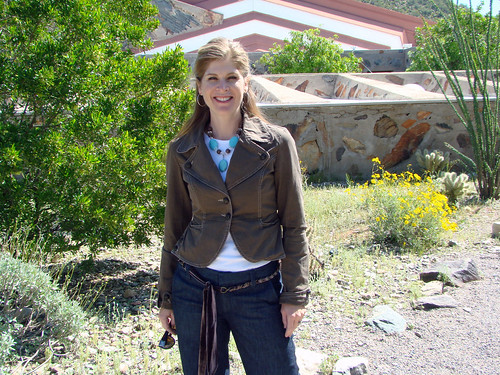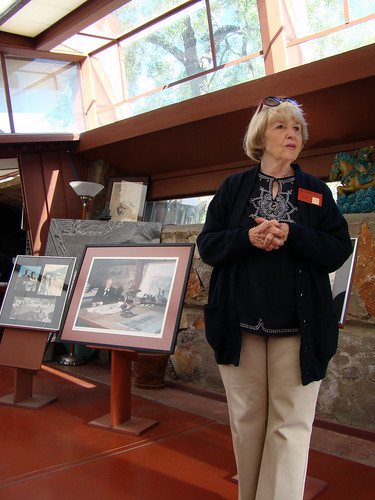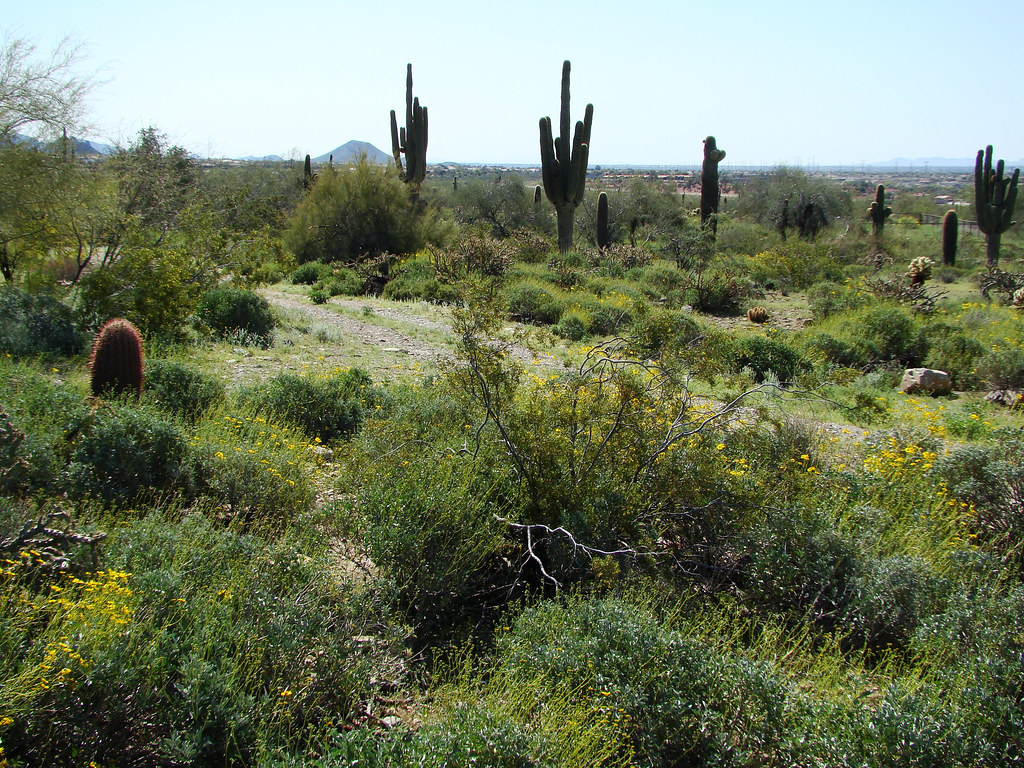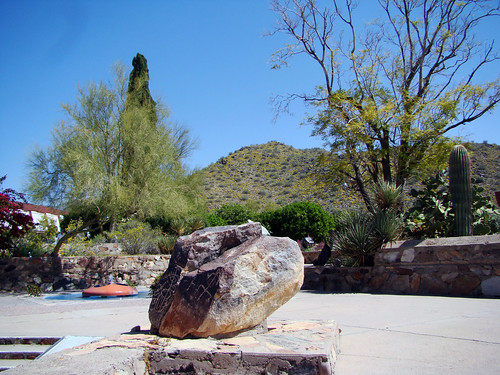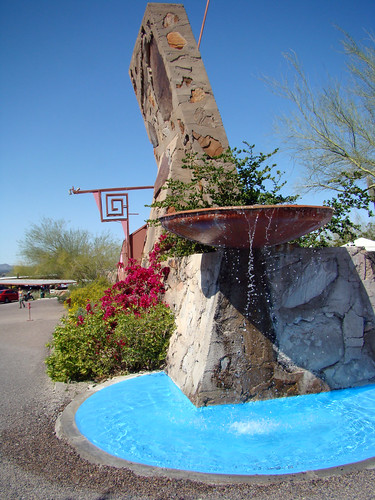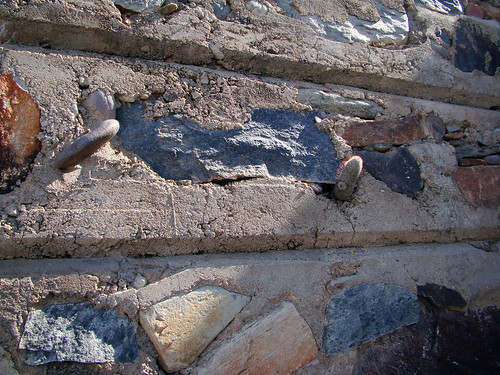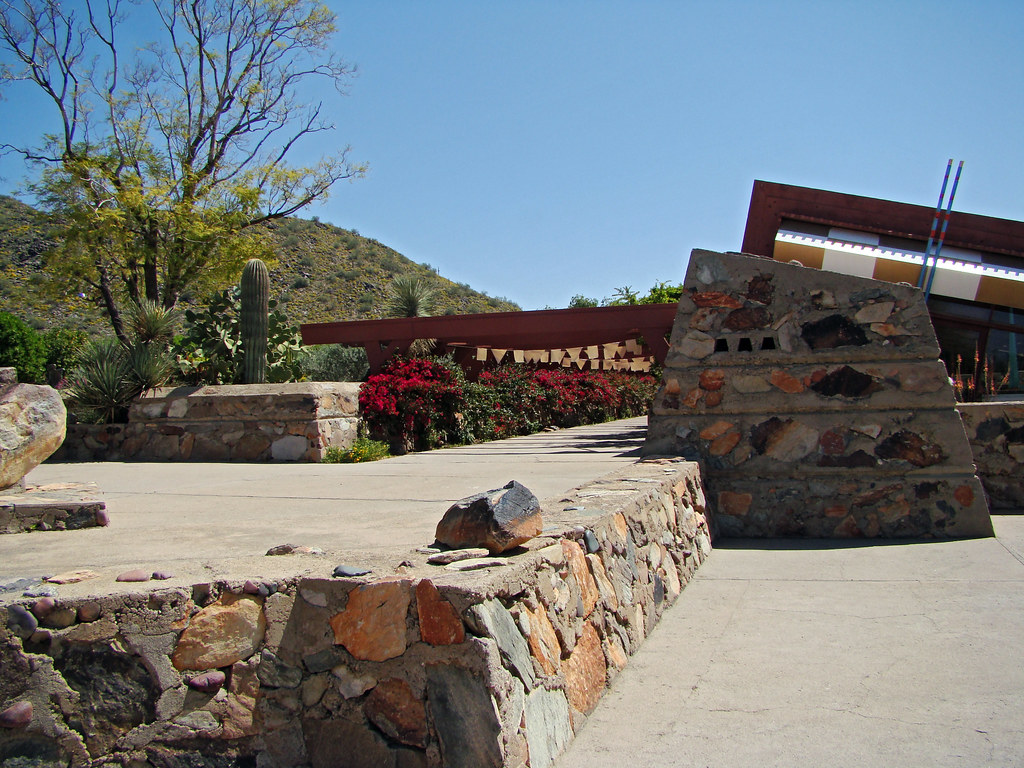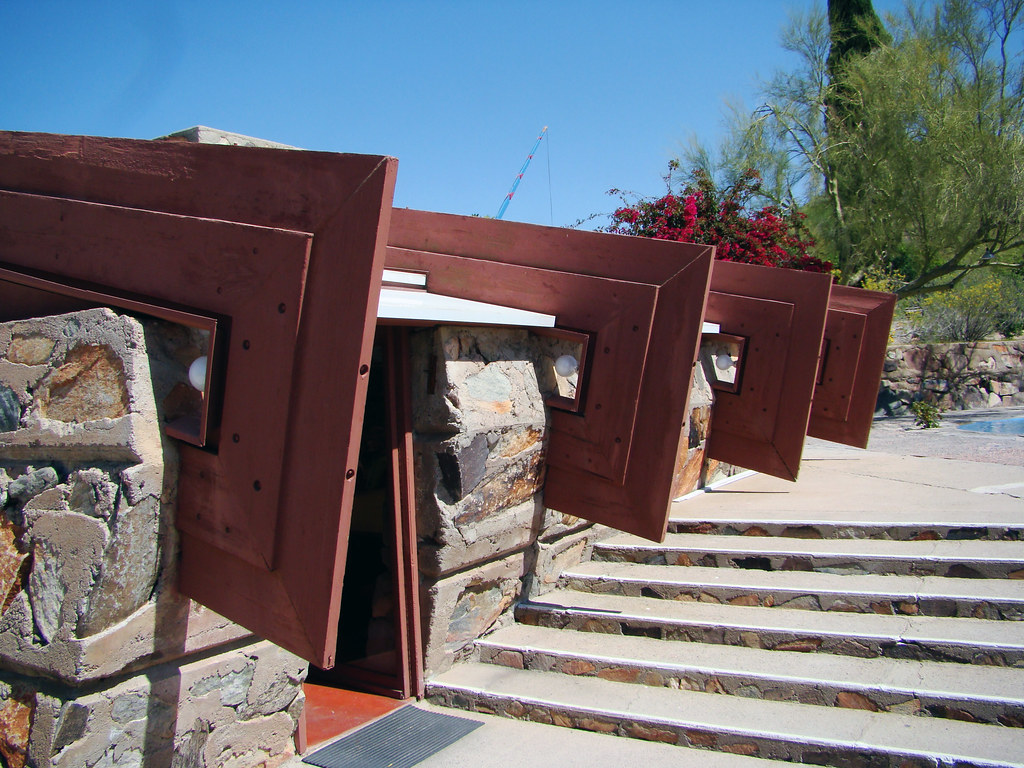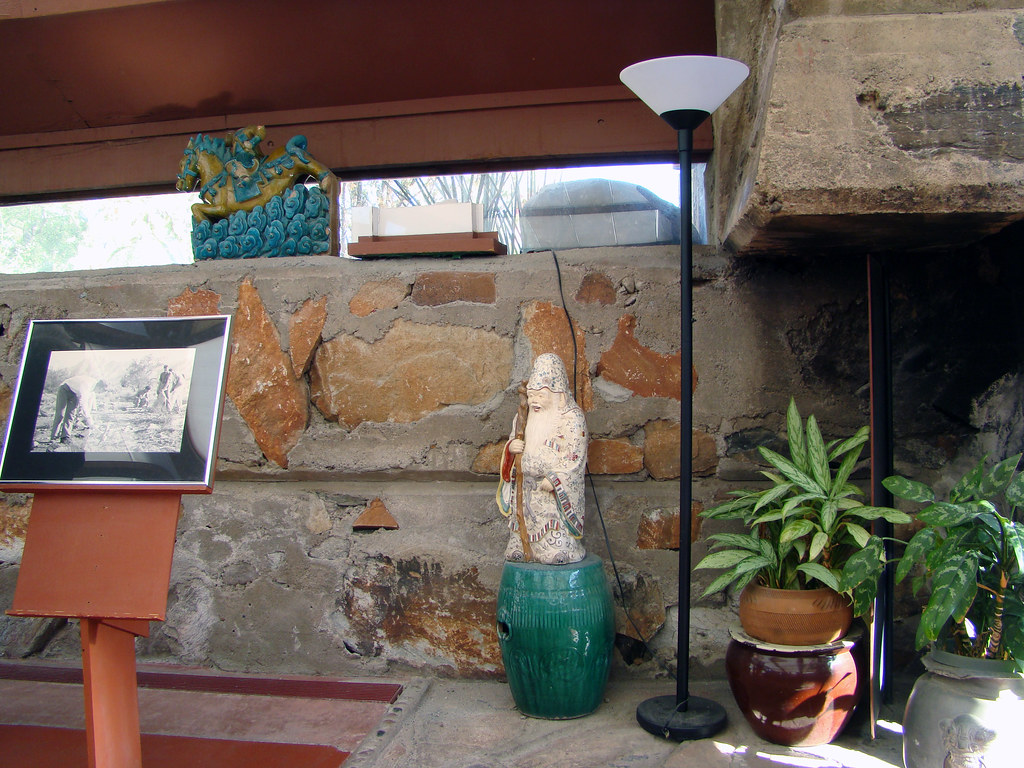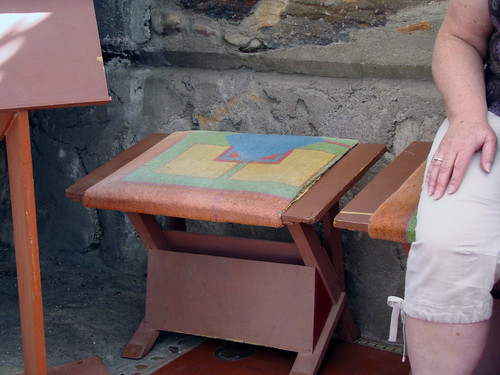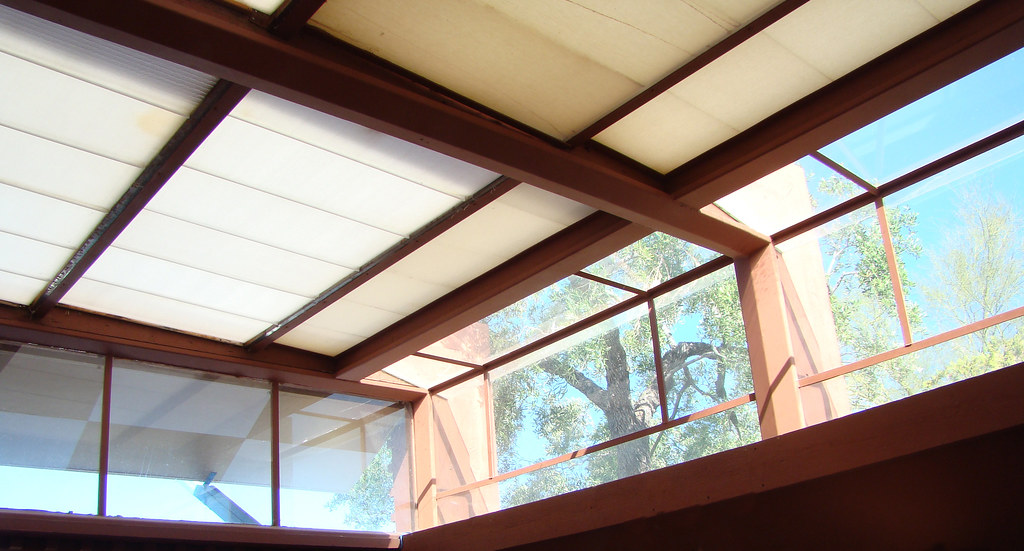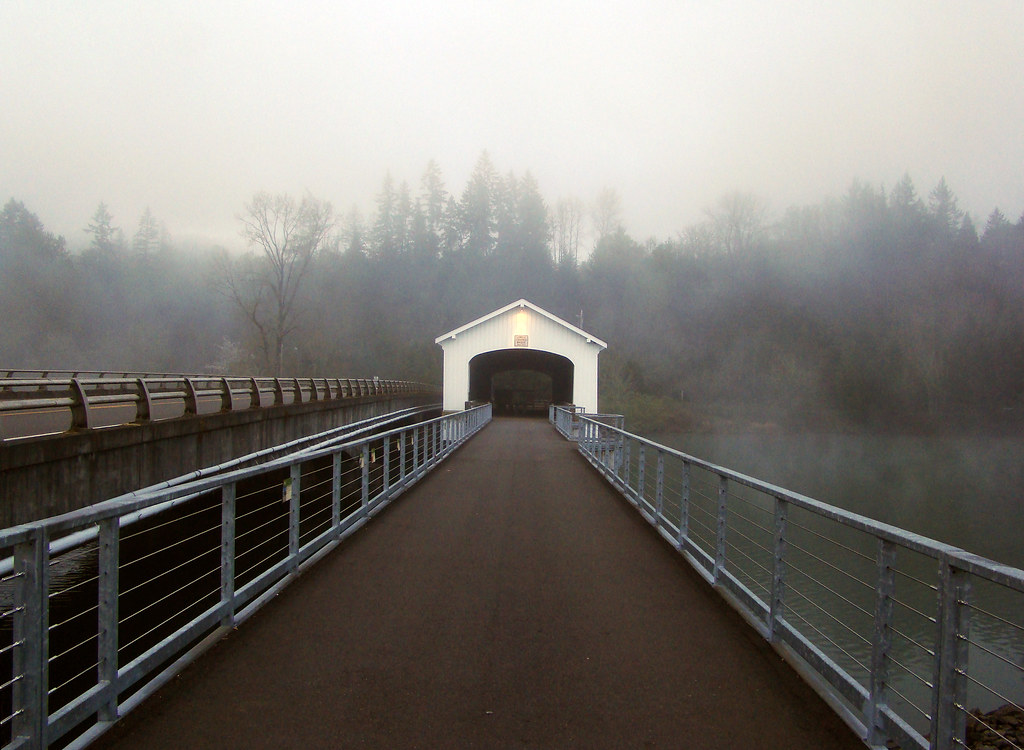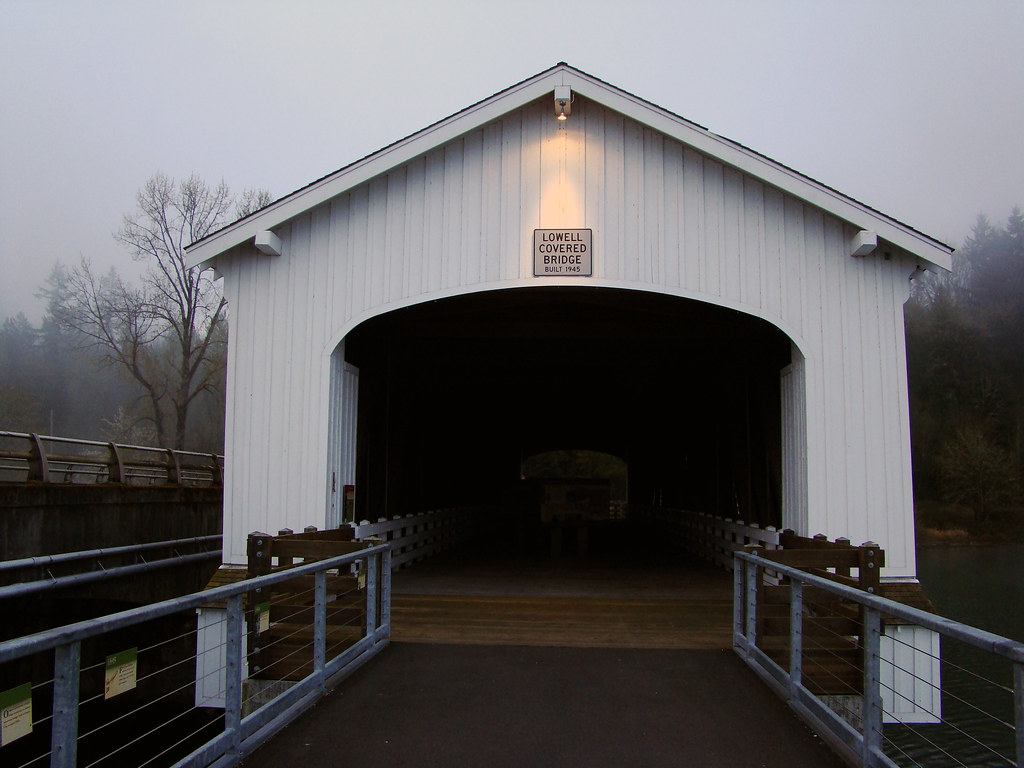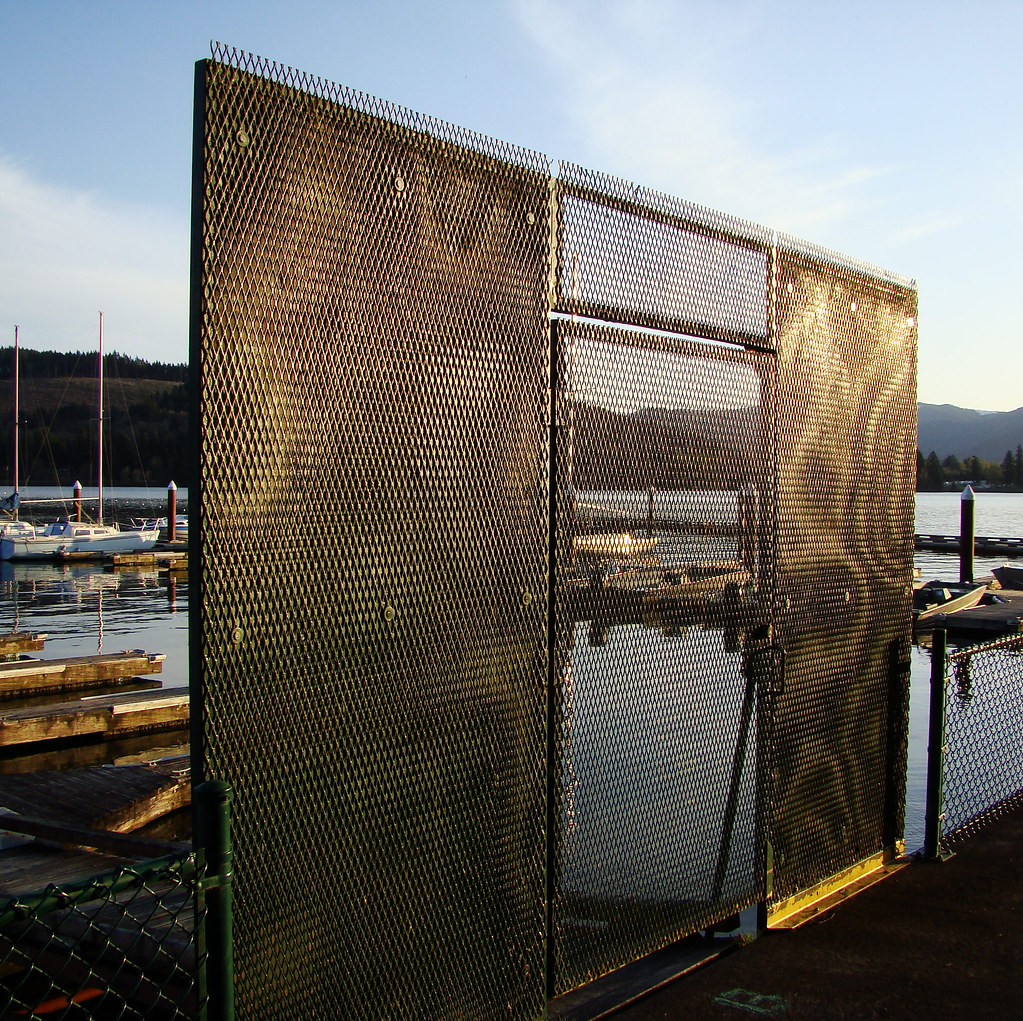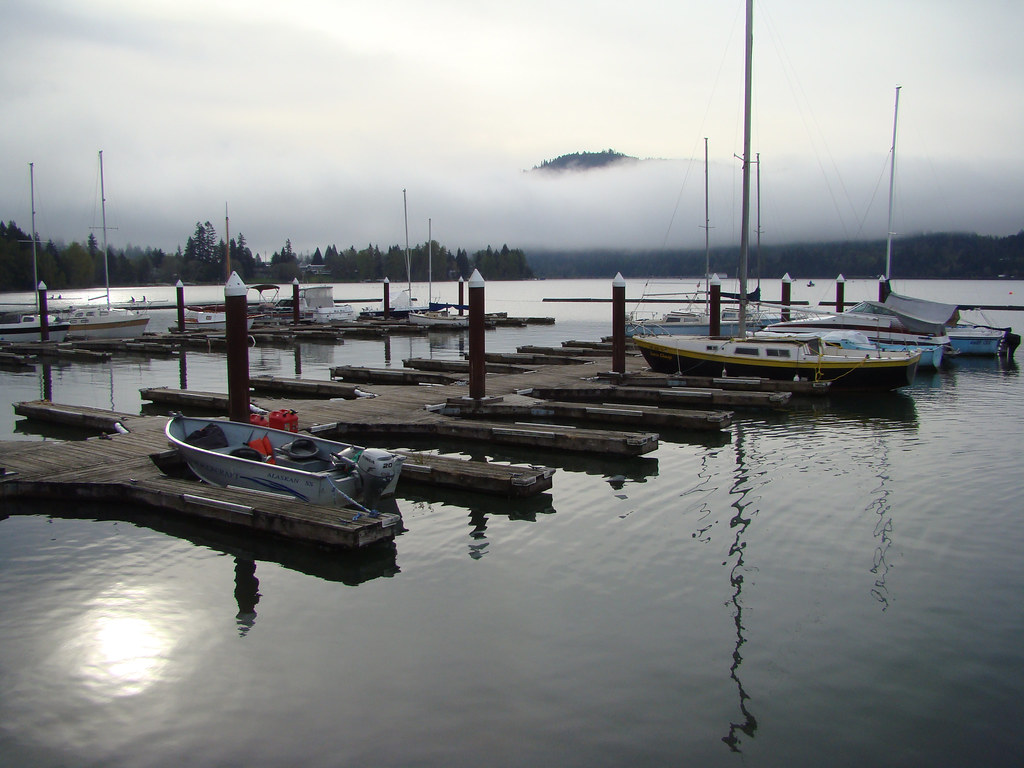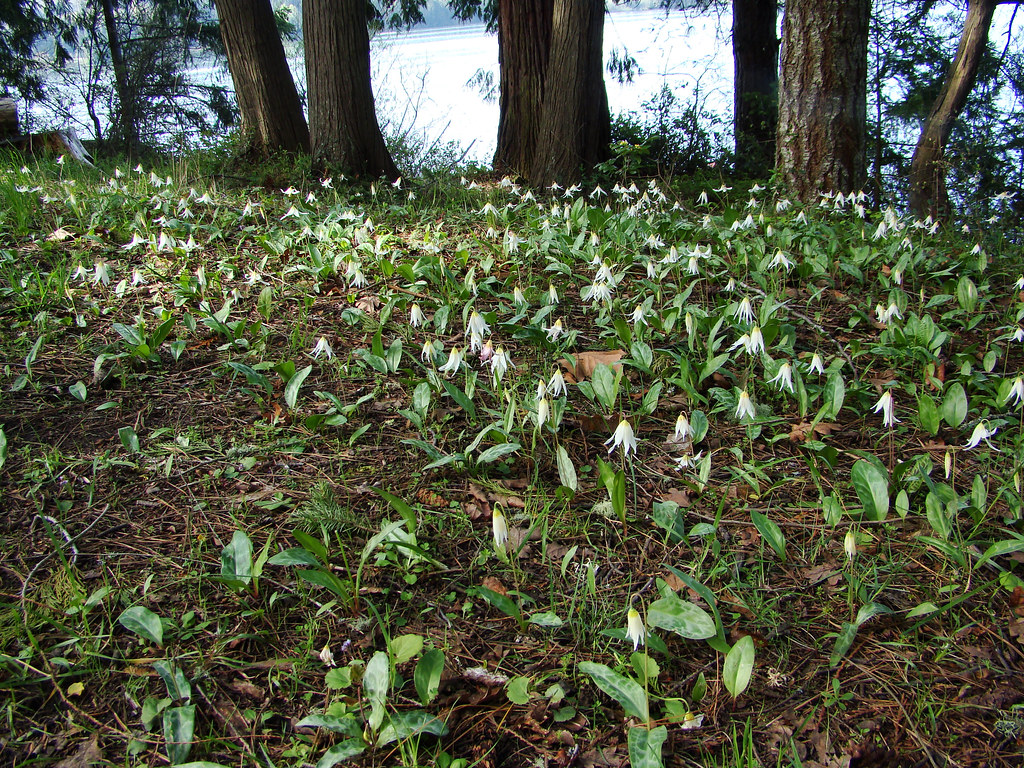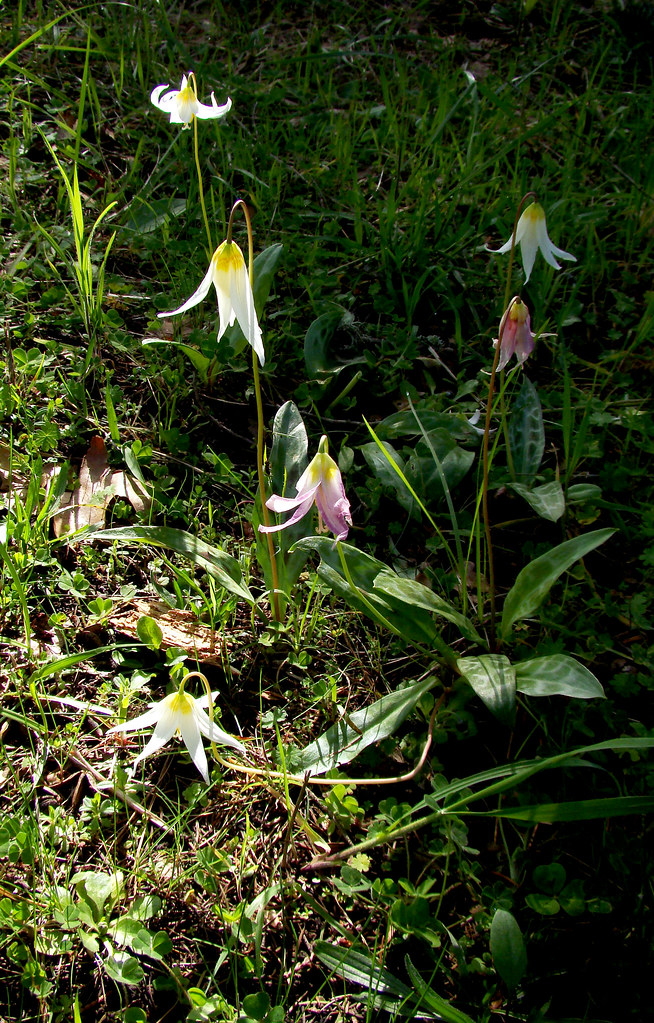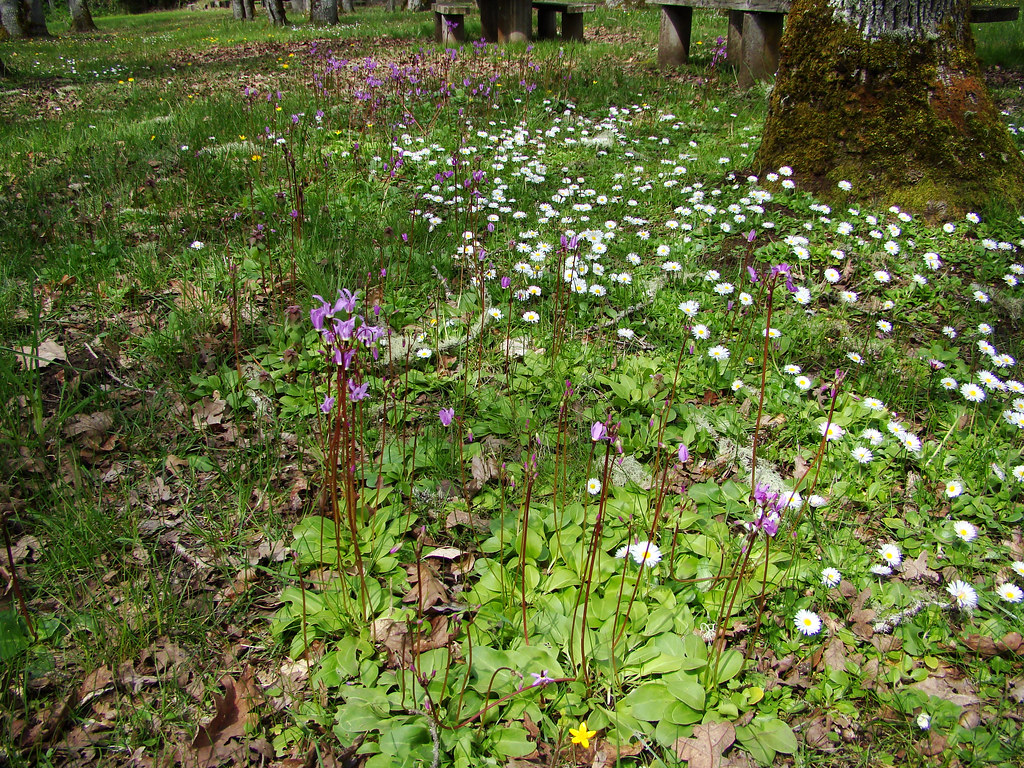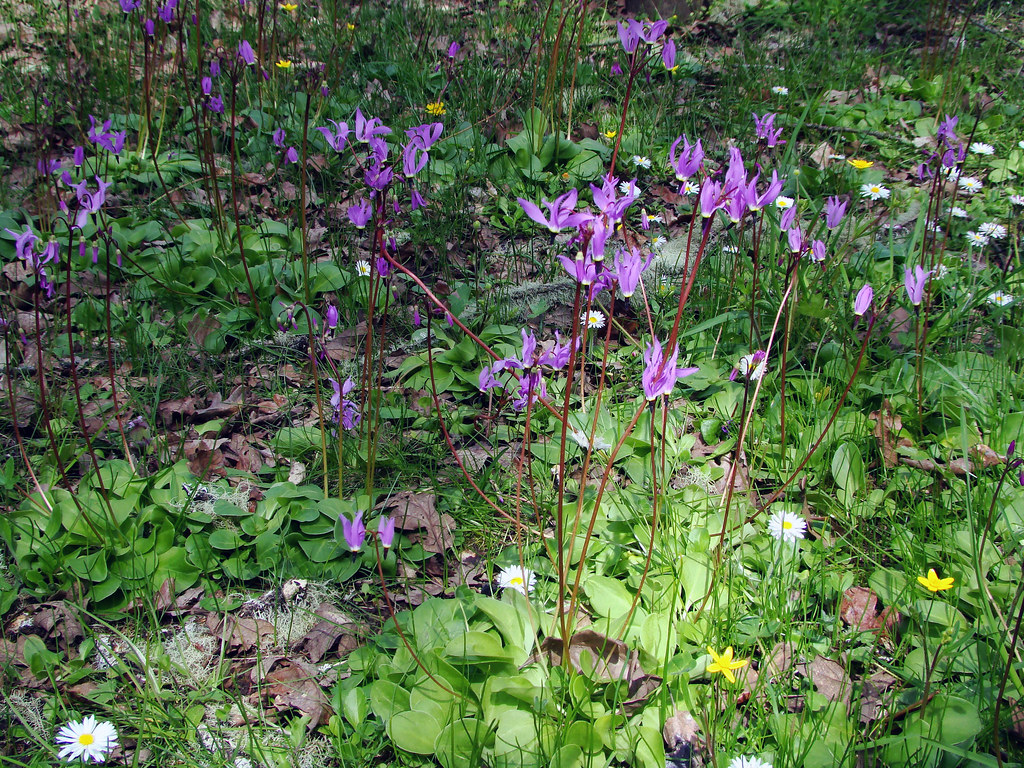As an extra-added bonus, we met my blogger friend Sherri, of Postcards and Coasters. To our delight she was able to join us for a game in Tempe and she joined us the following morning to tour Frank Lloyd Wright's winter home and headquarters of the Frank Lloyd Wright Foundation, "Taliesin West".
Our tour guide, Sandy, was a fount of knowledge on facts and tales about Frank Lloyd Wright and Taliesin (Welch for "shining brow") West.
She relayed an anecdote about the time that Frank Lloyd Wright was in a court of law. When asked to state his name and profession he replied, "I am Frank Lloyd Wright and I am America's greatest architect." After someone asked him why he chose this reply, he answered, "Because I was under oath."
Frank Lloyd Wright was a prolific architect, creating 1141 plans in his lifetime, with over five hundred resulting in completed works. He understood the value of intellectual property and fiercely protected all his designs long before the practice became commonplace in recent years. He never sold his plans outright, he only turned over his plans for the duration of a project and insisted upon their return at the end to ensure that they are never used again.
It speaks to Wright's ambition and confidence that he chose a land so rough and unhewn to fulfill his dream to build his winter home, a school of architecture, and an artist community. It is easy to understand how Wright fell in love with this stunningly beautiful location in the middle of the Sonoran Desert near Scottsdale, especially if he first saw it in full bloom like we did.
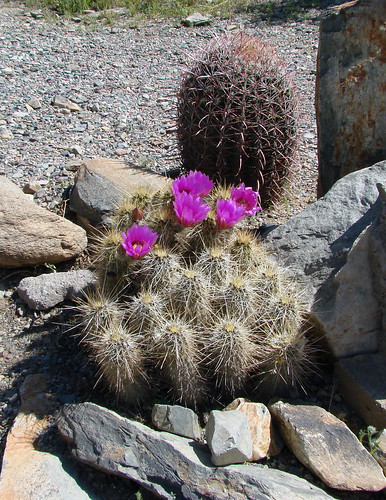
Wright and his third wife Olgivanna, along with 23 of his architectural apprentices, arrived at Taliesin West on Christmas Eve in 1937. They continued to live here every year from October through the end of May for the rest of their lives. At first, they lived the rural life in tents without running water, electricity, or telephone. They purchased hauling water for on-site use and drove west to Phoenix to take showers at the YMCA. The tents evolved into open shelters tucked into hillside to protect them from the wind. Olgivanna finally won a six-year hard-fought battle to get glass windows installed. Once installed, Wright referred to the glass windows as "the best idea I ever had". In 1953, they finally got electricity. Wright died six years later at age 92.
From Whirling Arrow to Clasping Hands
Wright drew inspiration from the desert and the Native Americans petroglyphs he found on the land.
He modified one petroglyph image that the Native Americans called "Whirling Arrow"...
...to create the "Clasping Hands" logo for Taliesin West:
Desert Masonry
The use of local materials to blend his structures into the environment was a pivotal element of the approach Wright coined "Organic Architecture". He used the sand and quartzite rocks found on site to create "desert masonry". As a gift of nature, the crystalline quartz rocks found within five miles of the site had a natural flat side thus making them highly desirable to be used as a basis for all the walls.
He and his apprentices built all walls slanted, like these used to build the vault.
The Office
Frank Lloyd Wright designed entryways to be deliberately dark, narrow and low which forces a visitor to bow, as in the Japanese culture. It imparts a feeling of an "embrace" before the stark contrast of "release" into a room with an abruptly-raised ceiling filled with natural light. These claustrophobic entrances also have the practical advantage of encouraging visitors to not linger and block entryways. This practice known as "embrace and release", or "compression and release", is a hallmark of Wright's architectural style.
We bowed as we entered the Taliesin West office...
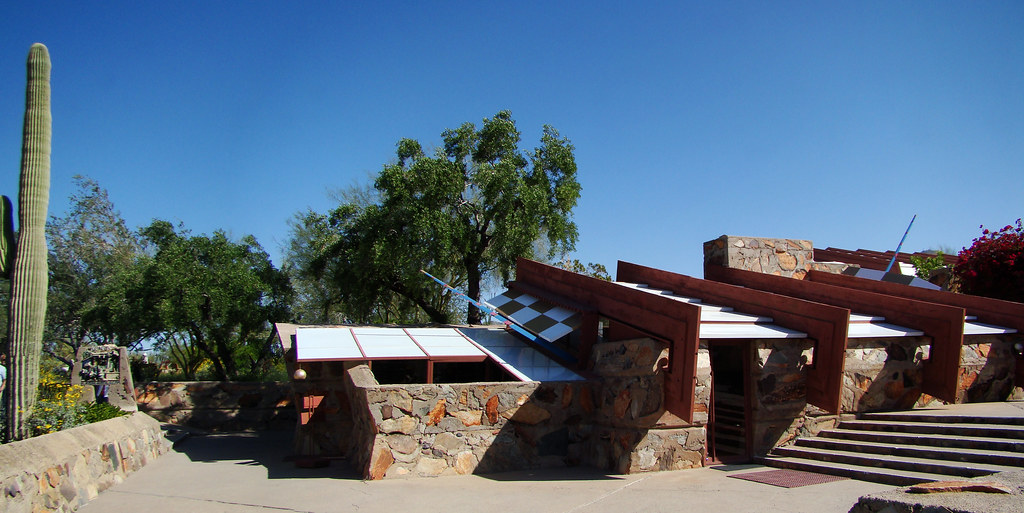
...and stepped into the light and airy office sparsely decorated with Wright's Asian artifacts.
We sat by his work table...
and sat on his drafting benches.
Sandy told us about Wright's fascination with hexagons, especially if they were asymmetric...
...and the modular white panels that diffuse the light from the glass ceiling while casting no shadows.
Even after his death,Wright still wields his control over Taliesin West. He gave permission to improve upon his designs only for preservation purposes. The preservationists are relatively certain that Wright would be pleased that the fragile canvas panels are now replaced with the more durable fiberglass-based material.
Next time, I will show you the home Frank Lloyd Wright built on the shining brow of the Sonoran Dessert.


